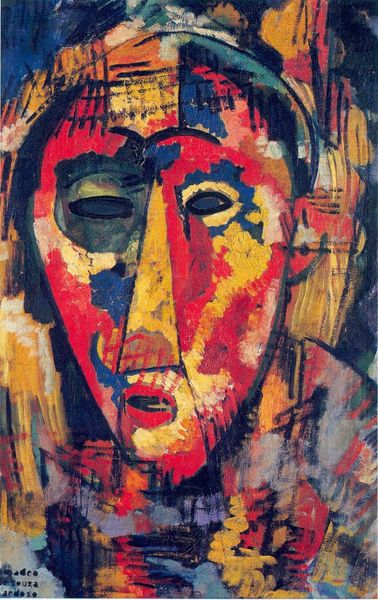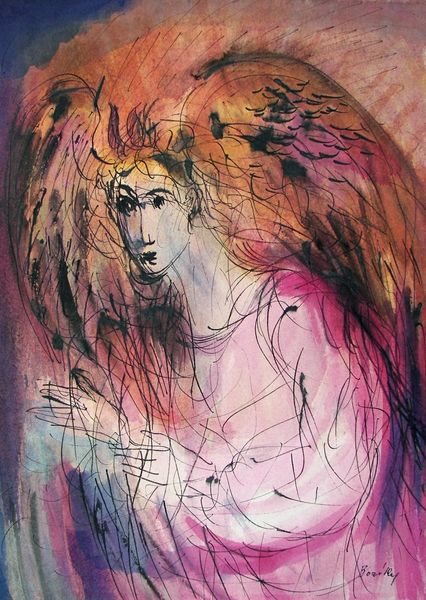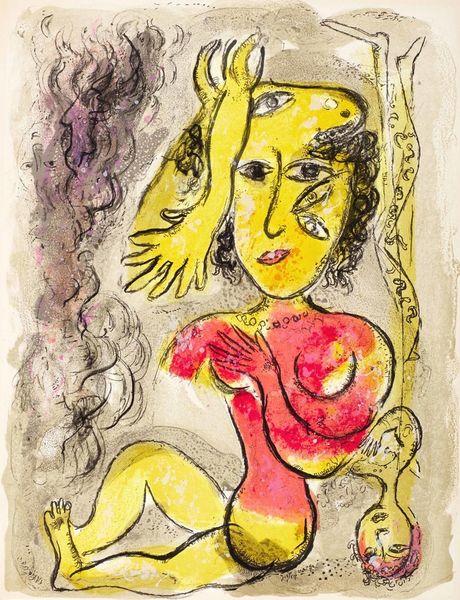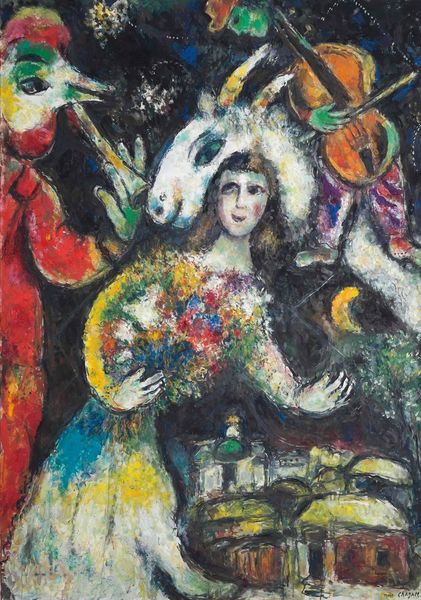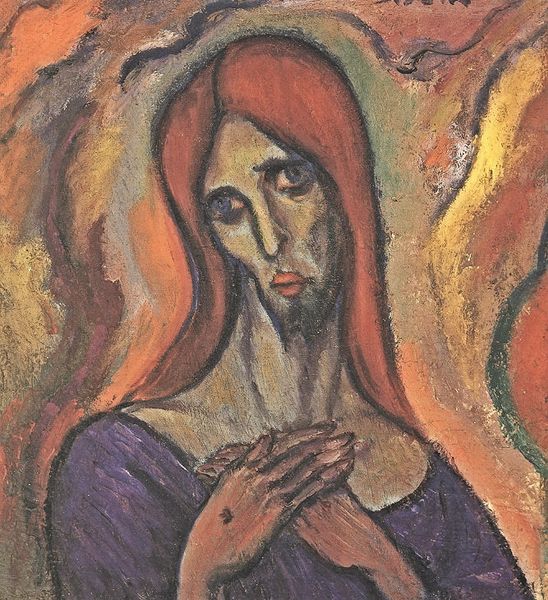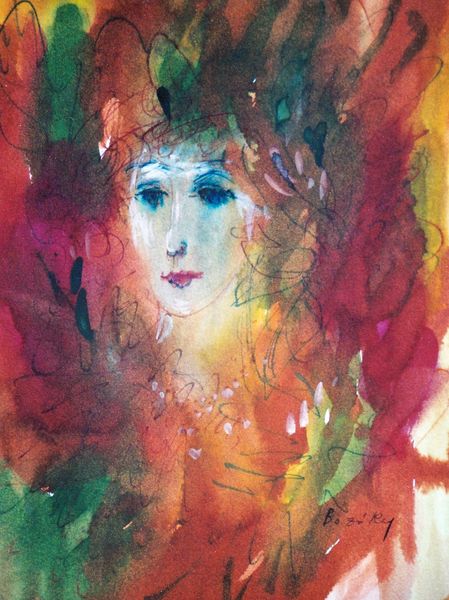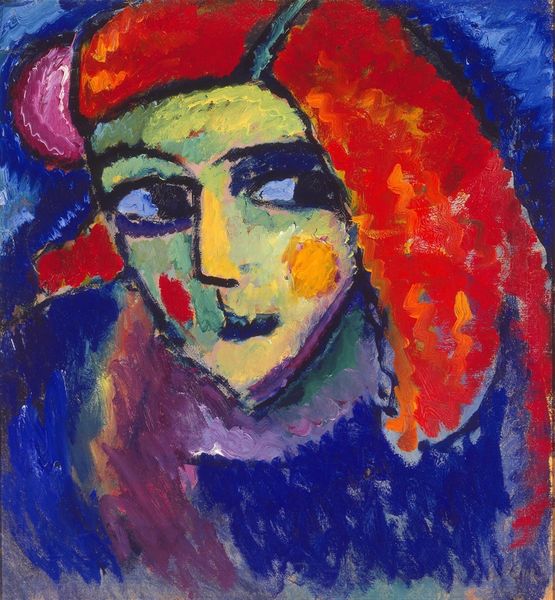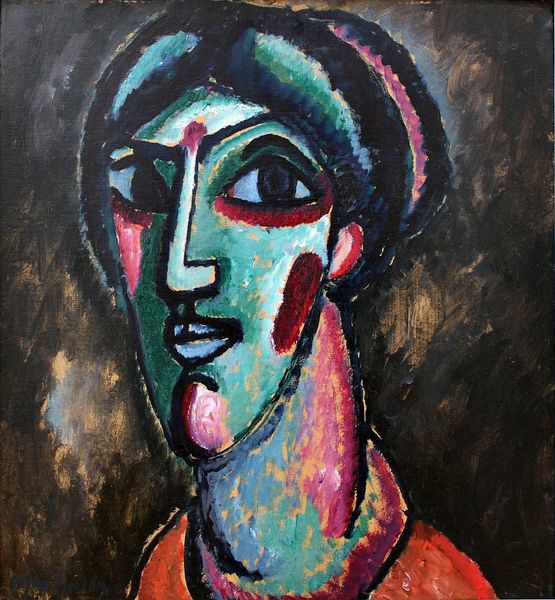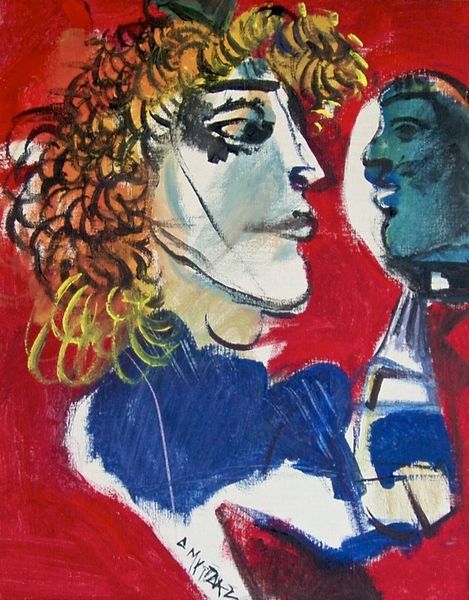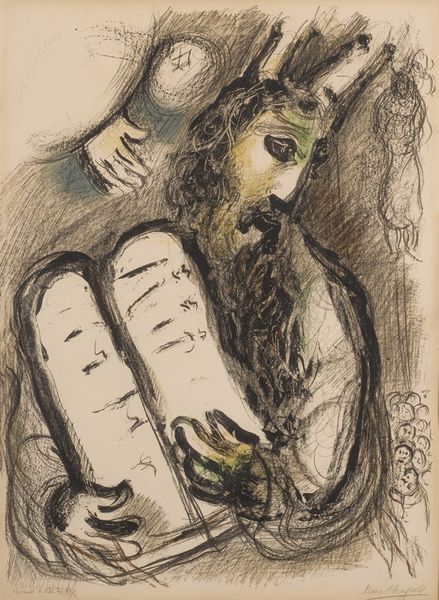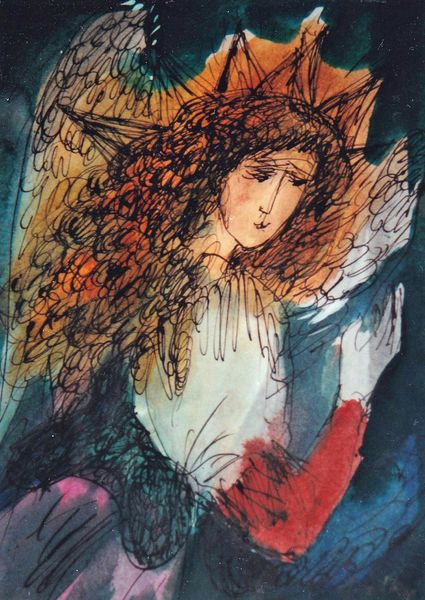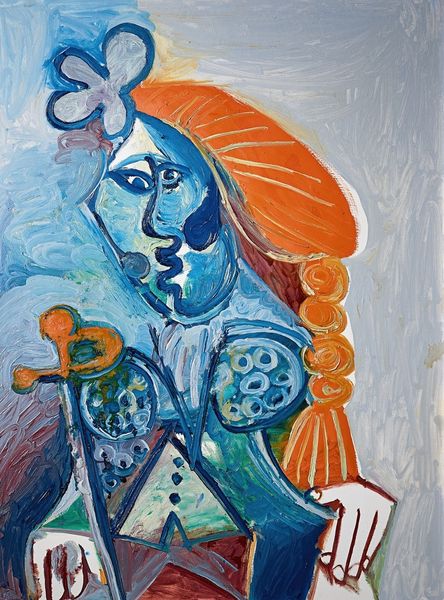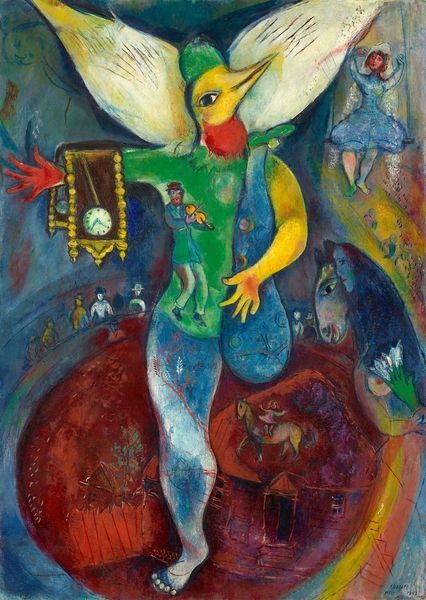
Copyright: Modern Artists: Artvee
Curator: This is *Verve #1*, created between 1956 and 1960 by Marc Chagall. It's a mixed-media piece that combines tempera and watercolor. Editor: The color palette is striking. Mostly reddish-brown tones creating a warm, almost melancholic feel, pierced by these vivid splashes of blue, red, and purple above and around the central face. Curator: The face itself, bisected, is a recurring motif in Chagall's work, and one can observe in this example his negotiation with modernist idioms such as double vision and fracturing perspective. The cultural impact of such aesthetics cannot be divorced from mass anxiety surrounding accelerated urbanization and changing socio-economic forces in post-war Europe. Editor: Right, but on a more personal level, to me, it also conveys a deep sense of internal dialogue, a kind of splitting of the self. The figure is rendered in a flattened almost graphic style that contrasts quite nicely with the expressionistic brushstrokes in the background. Also, I love how Chagall integrates the figures hovering above into the man's headspace. What is that, do you think? Curator: The figures aloft perhaps represent ideas, or even dreams, within the figure's mind, while also speaking to Chagall's well known vocabulary of flying figures from his Belarussian folklore memories and childhood. Consider his cultural and historical position; as a Jewish artist of Belarussian origin who worked primarily in France, Chagall often returned to imagery inspired by personal narrative even after being formally educated in western aesthetics. Editor: And what about those almost abstracted purple and red hands at the bottom? Are they offering something, or perhaps gesturing for help? It's intriguing. Perhaps this resonates, too, with debates in Jewish studies around gesturing during prayer. Curator: Those hands do draw the eye, grounding the dreamscape even further into our world. Chagall always had a masterful way of blending symbolism and emotional expression, which resonated widely at the time within an ever modernizing Paris, while not divorcing from a strong ethnic and historic diasporic identity. Editor: Absolutely. I walk away feeling like Chagall encourages us to consider both our individual experiences and our interconnectedness, simultaneously. Curator: Indeed, it encapsulates both personal and broader cultural narratives, a testament to art's public role in making these visible.
Comments
No comments
Be the first to comment and join the conversation on the ultimate creative platform.
